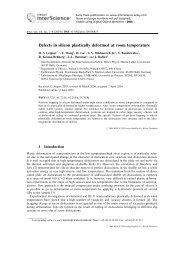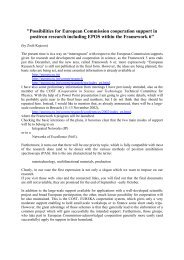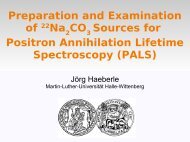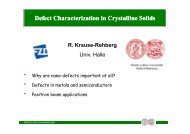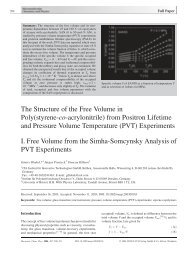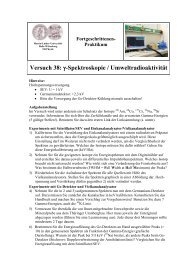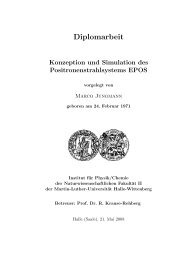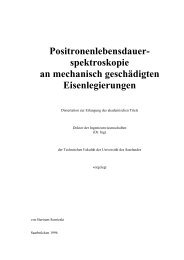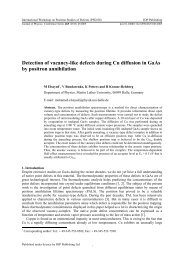Introduction into defect studies in ceramic materials(III) - Positron ...
Introduction into defect studies in ceramic materials(III) - Positron ...
Introduction into defect studies in ceramic materials(III) - Positron ...
Create successful ePaper yourself
Turn your PDF publications into a flip-book with our unique Google optimized e-Paper software.
Defect Chemical Reaction<br />
3. Electrons, Holes, and Defect Ionization.<br />
• “Intr<strong>in</strong>sic electronic” reaction:<br />
•<br />
null = e′<br />
+ h<br />
( 2.<br />
24)<br />
•<br />
•<br />
•<br />
•<br />
The formation energy is the band gap.<br />
When electrons and holes are tightly bound to an ion, or otherwise<br />
localized at a lattice site, the whole is considered to be ionic <strong>defect</strong>s.<br />
The valence state of <strong>defect</strong>s can be vary.<br />
Changes <strong>in</strong> valence take place via ionization reactions such as:<br />
••<br />
•<br />
V ′ O + e = VO<br />
( 2.<br />
25)<br />
• • ••<br />
Zni<br />
+ h = Zni<br />
For which equilibrium constants can be written:<br />
( 2.<br />
26)<br />
K<br />
1(<br />
2)<br />
K<br />
1(<br />
2)<br />
[ ] •<br />
VO<br />
[ V ] •<br />
O n<br />
[ ] ••<br />
Zni<br />
[ V ] h<br />
= •<br />
= •<br />
i<br />
∆g<br />
= exp( −<br />
kT<br />
1<br />
∆g<br />
= exp( −<br />
kT<br />
2<br />
)<br />
)<br />
9<br />
( 2.<br />
27)<br />
( 2.<br />
28)



